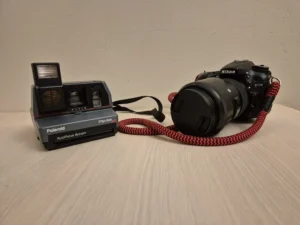What is a Pixel?
The word pixel was created from the two words “picture element”. From that, they abbreviated taking the first few letters from “picture element”, and it slowly became pixel. Now, instead of anyone thinking of a pixel as an abbreviation, they think of pixels as square dots. These pixels are what line up and create images on your computer screen, typically with 72 pixels per inch or PPI.
When you print out a picture those pixels are translated onto paper at a rate of 100 to 300 dots per inch or DPI. There are millions of tiny little dots that have formed rows and columns so tightly knit so that you can’t see each individual pixel, instead you see a smooth ongoing picture full of different colors and ‘textures’.
Related Article: Difference between DPI and PPI.
Pixelation
Have you ever seen a pixelated image? A picture that looks like it’s made up of blurry “blocks”, instead of a smooth-flowing picture of color? The pixelation effect is caused because the image was taken with fewer pixels than are trying to be shown, and the computer is just putting in the required pixels and not taking into account how many pixels the “true” picture had.
The computer only does what you tell it to, so when you get a pixelated picture it isn’t the computer or the picture’s fault, there just aren’t enough pixels recorded in that image data for that large of a picture.
What is a Megapixel?
Megapixels are an important facet of
Everything is measured in various increments. One thousand millimeters is the equivalent to one meter. With that same concept one million pixels is the equivalent to one megapixel. Since you are reading this article you are also staring at pixels and megapixels on your screen.
When thinking of a megapixel, think of how all the threads come together to make a tapestry or the yarn that makes scarves. It is the same with a megapixel. Each pixel alone is only one color, but combine it in a sequence with many other pixels, and you will see more than one color and a picture instead.
Pixels are so small though that you don’t really look at one individual pixel with your naked eye, that is why it takes so many pixels together to see them. That “so-called” combination of pixels is what makes up megapixels.
Now, back when digital cameras first started coming out the highest pixel count was between 1-2 megapixels. Back then, it was important to be aware of how many megapixels you were using and what you were going to get. If the camera doesn’t have enough megapixels, it won’t have the capabilities to give you a quality, non-pixelated picture. There wouldn’t be enough pixels recorded to make a large image that is still sharp and clear. Luckily in today’s
During this whole discussion nothing has been said for or against how many megapixels you should have to get quality
Sadly, this is a misconception that no one bothers to correct. There is so much more to creating those images, including lighting, knowledge of the camera’s buttons and controls, tripods, composition, and more.
Megapixels vs Image Size
You’re familiar with the Megapixels on you’re camera. The table below can tell you what size of pictures you can print with megapixels you’re camera provides.
| Megapixels | Pixel Resolution* | Print Size @ 300ppi | Print size @ 200ppi | Print size @ 150ppi** |
| 3 | 2048 x 1536 | 6.82″ x 5.12″ | 10.24″ x 7.68″ | 13.65″ x 10.24″ |
| 4 | 2464 x 1632 | 8.21″ x 5.44″ | 12.32″ x 8.16″ | 16.42″ x 10.88″ |
| 6 | 3008 x 2000 | 10.02″ x 6.67″ | 15.04″ x 10.00″ | 20.05″ x 13.34″ |
| 8 | 3264 x 2448 | 10.88″ x 8.16″ | 16.32″ x 12.24″ | 21.76″ x 16.32″ |
| 10 | 3872 x 2592 | 12.91″ x 8.64″ | 19.36″ x 12.96″ | 25.81″ x 17.28″ |
| 12 | 4290 x 2800 | 14.30″ x 9.34″ | 21.45″ x 14.00″ | 28.60″ x 18.67″ |
| 16 | 4920 x 3264 | 16.40″ x 10.88″ | 24.60″ x 16.32″ | 32.80″ x 21.76″ |
| 35mm film, scanned | 5380 x 3620 | 17.93″ x 12.06″ | 26.90″ x 18.10″ | 35.87″ x 24.13″ |










Thank u for this information. I’m really need it and now i found it.
Thank you very much I really need this information about Megapixel.which I got in this article.
thank you for this info.this is a fix-it-to-wall kind of table for new photographers like me.
This is very useful to me. Because upto now i am under impression like more pixels will be more clear and I captured photos with 14 MP which are always shaked and not clear photos. Now I will reduce the pixel size